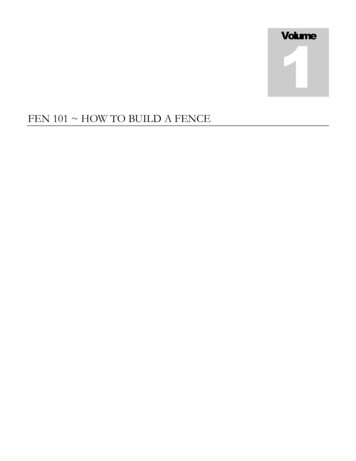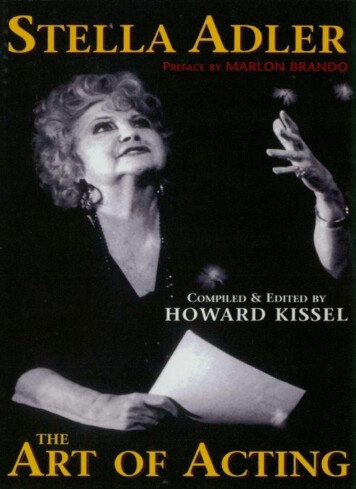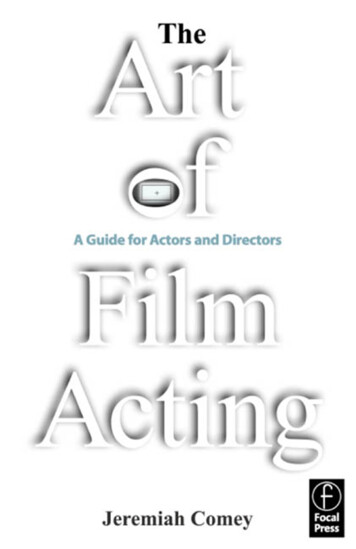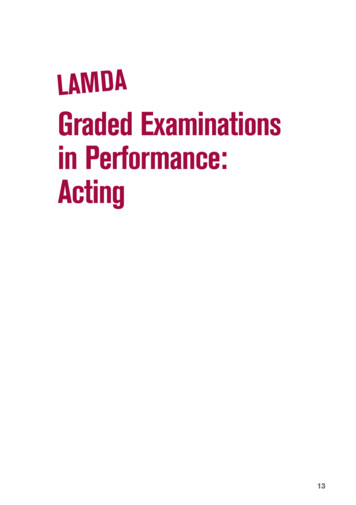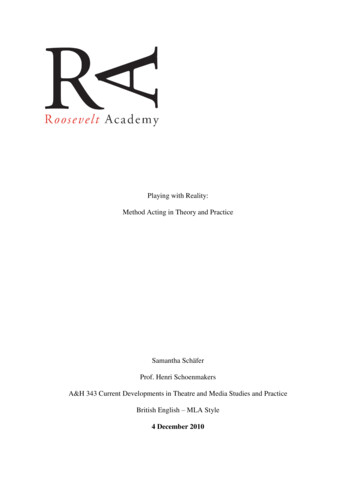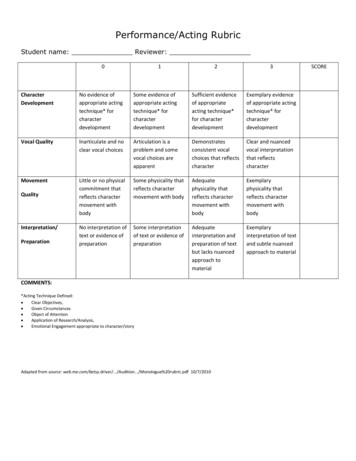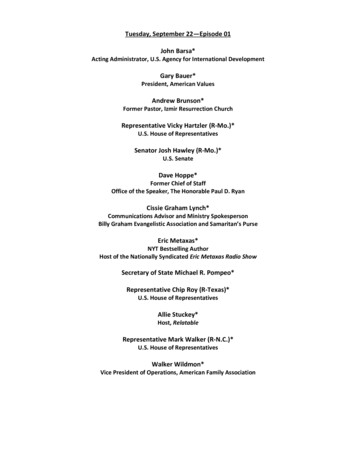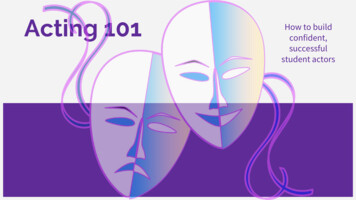
Transcription
Acting 101How to buildconfident,successfulstudent actors
Welcome!At the start of any rehearsal, we want to build energy within our students and ourselves.Before we get started, let’s join in a circle to do a quick full-body warm up!
Focus first on the bodyStudents often don’t know what to do with their bodies and end up acting only withtheir voices. The results can be awkward and unfulfilling.Instead, have students do a “molding” activity. In pairs, students are instructed to molda partner into an expression of an emotion, starting with the face and moving on to therest of the body. The partner doing the molding must step back and engage others in adiscussion of those choices and the results, make adjustments as needed, then havethe character say a line with the assigned emotion while maintaining the posture.Let’s try it!--Volunteers?**Continue building by molding groups, to discover ways to show relationships and interactions amongcharacters onstage--all without any words! Small groups can make use of cameras so they can try things out andthen evaluate the images.
Second, build empathyActors should develop an understanding of character emotions and background. Theyneed to empathize with the character they are playing. As Mike Myers shared on Insidethe Actors Studio, “The villain thinks he is the hero in his own story.”
Third, find a purposeHave you ever seen a student wander aimlessly on a stage or shift back and forth inposition? Every movement on stage should be motivated by a purpose. Directors andcoaches need to help students discover why a character is behaving a certain way in themoment. Tie this understanding back to your work with the body. (Tip: don’t just tellstudents to make something “bigger.” Help students understand their characters’objectives by giving them statements of character intent or by asking more experiencedactors to come up with those statements.)Let’s try an exercise in developing purpose!
At every step, encourage collaborationHelp students learn to work in harmony with one another and to respond to oneanother. One way to do this is with a version of “yes, and.”
ResourcesBooks about acting: A Practical Handbook for the ActorStella Adler, The Art of ActingKonstantine Stanislavski, An ActorPreparesUta Hagen, Respect for ActingViola Spolin, Improvisation for the TheatreContact us:Tawnua Tenley, ttenley@mvcsd.orgGrant Freeman, openarenas@gmail.com
Books about acting: A Practical Handbook for the Actor Stella Adler, The Art of Acting Konstantine Stanislavski, An Actor Prepares Uta Hagen, Respect for Acting Viola Spolin, Improvisation for the Theatre Contact us: Tawnua Tenley, ttenley@mvcsd.org Grant Freeman, openarenas@gmail.com
